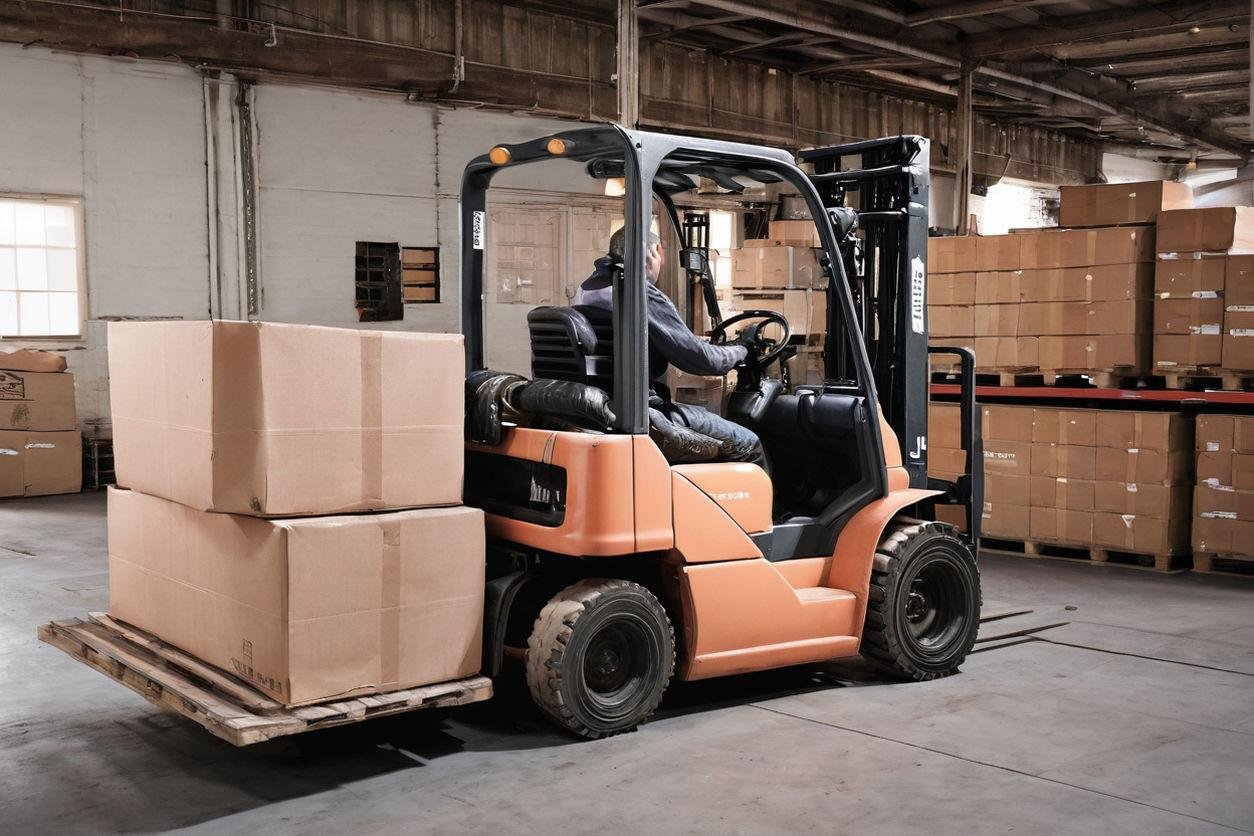The forklifts have turned out to be quite an essential equipment in a warehouse setting or on construction sites. Like every other machine, forklift trucks have a limited life span. Knowing how and when one needs to upgrade their forklift fleet can save money, time, and increase security.
In this blog, we will look at five common signs that determine whether it is time to upgrade.
1. Frequent Repairs and Maintenance Costs
They are built tough, but with enough usage, the wear and tear will catch up. If your forklifts require repairs more frequently than they previously did, it may indicate that they are reaching the end of their lifespans. Constant minor repairs add up in cost and create a lot of downtime, which hurts productivity.
- Frequent breakdowns, even after recent repairs.
- Rising spare parts cost.
- More frequent service calls to repair mechanical issues.
This may be cost-effective since one can upgrade to newer models rather than continue investing money in an older forklift. New forklifts also come with warranties, reducing unexpected repair costs and keeping operations running smoothly.
2. Lower Performance and Efficiency
As the forklifts get older, efficiency in performance also diminishes. A machine which once could easily move might not be able to lift or transport a load correctly and may cause delays, thereby affecting the workflow.
- Slower operation speeds.
- Lower Lifting Power
- Overheating frequently
Upgrading to a newer model that is faster and efficient can help in streamlining your operations. Modern forklifts are designed to be more speed and powerful to suit the demanding work environments of today. It further helps you increase productivity.
3. Safety Concerns
Safety is the number one priority at any workplace, and older forklifts have huge risks associated with their operation for the operators and the employees at large. As a forklift grows older, the braking system, steering, and stability may be compromised. It tends to get into accidents.
- Failing Brakes or Steering Issues
- Wear Marks on Forks and Other Critical Parts
- Operators Report More Incidents or Near-misses.
If the safety features are outdated or faulty, then it’s upgrade time. New models have better safety features such as increased visibility, better ergonomics, and advanced stability control systems. Workplace injuries will be reduced.
4. Inexcusable Use of Outdated Technology
It has been three decades since forklift technology began to show huge improvements. For instance, electric motors, improved fuel efficiency, and an on-board telematic system do help a lot in performance and management of your fleet.
- Your current fleet of lift trucks lack key features found in modern lift trucks, including GPS tracking or automated systems.
- Not integrated with WMS systems.
- Top-of-the-line forklifts in higher classes of technology will go a long way toward improving your overall operation.
By doing this, you will have real-time insight into all your key performance indicators, fuel-saving features, and automation that no doubt will optimize your fleet management while reducing operational costs.
5. Operating Costs Increased
If the cost of operating your current fleet of lift trucks is constantly on the rise, then that is a sure indication that something is amiss. Generally speaking, the older a forklift, the more fuel or electricity it uses; hence, the greater the cost of its operation. Moreover, maintenance for older equipment can be costly, partly because of the difficulty and expense of finding special parts.
- Rising fuel or energy costs.
- Replacement parts that are hard to find are invariably highly priced.
- Insurance premiums that increase based on the machine’s age.
Switch to more energy-efficient models that drastically lower your running costs.
Many of the latest forklifts are designed to consume minimum fuel, and some of them are even electric. These offer a greener alternative which can save you a fortune over an extended period.
Benefits of Upgrading Your Forklift Fleet
When you upgrade your forklift fleet, not only are the above-mentioned issues resolved, but it also has several other benefits.
1. Increased Productivity
New forklifts boast larger engines and smoother running systems that enable them to handle loads faster, while hours of downtime are reduced. Productivity goes up, translating into a step-up on the operations side generally speaking.
2. Improved Operator Comfort
Modern lifts are installed with features for better operator comfort, like adjustable seats, enhanced visibility, and reduced noise levels. Happier operators mean they can be more productive and not cause any accidents resulting from tiredness.
3. Better Fuel Efficiency
Newer lifts use less fuel or energy because of improved engine technologies. This simply translates into lesser carbon emissions, lower fuel costs, and an eco-friendly operation.
4. Better Safety Features
Newer forklifts include better safety features both for the operator and your inventory. Some of these updates involve better braking systems, cameras, automated alerts, and better all-around visibility.
5. Telematics and Fleet Management
Upgrading your forklifts offers the potential to utilize telematics systems to monitor performance of the forklift, track usage, and provide valuable data that would enhance overall fleet management. This technology helps you manage maintenance schedules much more efficiently, follow operator performance, and reduce downtime effectively.
When Exactly Should You Upgrade?
Determining exactly when you should upgrade your forklift fleet is based on a few factors:
Age of the Fleet
If the majority of your forklifts have surpassed the 10-year mark, it may be time to consider replacing them. The older the machine, the likelier it is that breakdowns are going to happen, costing more in repair and downtime.
Usage Frequency
Every day, multi-shift usage in which a forklift is being used will wear out sooner than those that are in casual use. Consider the intensity of use when considering whether it’s upgrade time.
Budget Considerations
Sometimes, upgrading at the outset is expensive, but most of the time, it is well worth the investment given long-term savings both in terms of operating costs and repair bills, not to mention improved productivity.
Leasing vs. Buying New Forklifts
If you have apprehensions about the cost of upgrading, consider leasing rather than buying your forklifts. Leasing provides an avenue where the upgrade of the fleet does not need huge upfront investments, and at any given time, you will have the most recent models. Again, a plus may be that most lease agreements include maintenance to help reduce unexpected repair costs.
However, if the budget is there and you are planning on using the forklifts many years down the line, then it may be more economical to buy them outright. You will have full ownership of the machines, and after these have been fully paid for, you enjoy years of productivity without having the monthly payments.
Conclusion
Upgrading your forklift fleet is not just about replacing those old machines with new ones. You are upgrading to improve productivity, ensure safety, and reduce operating costs with newer technology. For that reason, knowing these signs that your current forklifts or JCB excavator are no longer performing optimally. It means you are able to make learned decisions based on what is best for your future business.
When the time comes to upgrade, welcome the new opportunity to upgrade your fleet’s efficiency, safety, and overall performance. Buying or leasing-adding new forklifts does mean smoother and more cost-effective operations.




